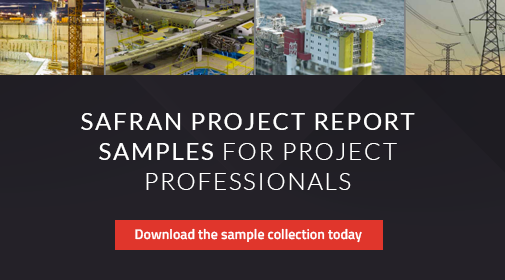For decades and since the early days of computing, having the right information available, easily accessible, at the appropriate level of detail, and on a timely basis has been the desire of management at all levels.
Keeping project stakeholders informed with project status reports is a crucial component to running a successful project. The purpose of project schedules and project status reports is not just to generate more data for the sake of it, but to provide the right information to the right person at the right time.
So, how is this best achieved?
Fundamentals
IT systems and project scheduling software are capable of generating vast quantities of data.
But what's that data worth?
Well, not much if it doesn’t tell you what you need to know. If you’re not receiving necessary and meaningful information, that lets you manage your project and resources to the fullest, the information is fairly worthless.
For stakeholders in general, but especially project managers and executives, information is their key resource and the key to active action. Visit the link below to discover how Safran Project helps you streamline your project reporting.
Key areas
Project management is an ever-evolving discipline, but, when it comes to project status reports, here are six key areas you can fall back on:
1. Catering for different stakeholders
Different stakeholders will require different information. The questions to ask are:
- Who am I reporting to?
- How is this information going to help them do their job effectively?
Identify the needs of the various stakeholders, remembering that a key one is timeliness. Consider when and how often your reports should be provided to stakeholders.
2. Organising information
The way in which you arrange information in reports is critical. As famously put:
Unless organized, information is still data. To be meaningful it has to be organized.
Peter F. Drucker, Management Challanges for the 21st Century
Stakeholders and executives may well have a different focus, requiring you to organize the same information in different ways. One stakeholder might
An executive might be concerned with how various disciplines interface with each other, and an engineering manager with knowing where time is being spent (within both planned and unplanned work).
For any stakeholder, the information that's most important to them should stand out and be easily accessible. You will not be able to get attention from executives on specific issues if the information is hidden in the middle of a 300-page report.
So, in summary, ensure you organize information to cater for the individual needs of each stakeholder.
3. Information at the appropriate level
Information needs to be at the appropriate level because executives, for example, will not generally wish to be confronted with a mass of detail. Rather, they will want an overall picture that supports their key needs.
A line manager, however, will often need specific and detailed information relevant to his or her area of responsibility.
Finally, be sure to dedicate time and effort to exception reporting, since exceptions and deviations from the plan require decisions from executives and managers.
4. Don’t hide bad news
Avoid trying to hide bad news. Bad news is ok – we all receive and give it sometimes. And we deal with it. What managers and executives hate
So, one way of organizing information effectively is to focus on the unusual and unexpected.
The ultimate test of your reporting capabilities is that there are no large surprises – since issues, sequences of events, and trends have been managed effectively, before they have the chance to go seriously awry.
5. Timeliness
In project management, timeliness is a crucial component to information and project status reporting. The frequency of project status reports is the beat of your project. Out-of-date is just another way of saying inaccurate.
Decisions made today on information that's weeks old, can be, in a sense, completely justified (when that was the only information available), but nevertheless totally wrong.
Regular updates to stakeholders are essential. Keeping stakeholders updated on a timely basis improves the transparency of the project, keeps it steering on the right track and increases the chances of project success.
6. Report Visuals
Formatting, layout, and visuals play an important role in report design. Visual information can be more easily and quickly digested, so it's important to make use of charts, graphs, and diagrams, where possible.
It's also important that let your audience filter, sort, aggregate, and group data to support the work of all stakeholders.
Your set of project status reports should include:
Status Bar Chart with Frontline
Using progress bars with a frontline, it is easy to compare the current results to the originally planned values.
Make sure that your scheduling software allows you to view the project at an aggregated as well as detailed level, and allows filtering to focus on specific issues, events or areas of concern.
Status Histogram and S-curve
A status histogram and S-curve quickly demonstrates the current state of the project, and trends over time can be perceived with one glance.
The S-curve can show the cumulative values for the baseline, earned and actual expenditure, the current approved scope of work, and more.
The histogram can show periodic values and can also be used to compare planned resource usage vs actual, or used to count activities planned to start versus the number of activities actually started.
Performance Charts
Performance charts allow you to see the trend of how schedule, cost and to-complete performance indexes develop over time.
Reporting Period Summaries
These give trend information across a range of parameters. Parameters should ideally stem from industry-standard techniques, such as Earned Value Management. Numbers are given both as quantities and cost values.
Bull’s Eye Chart
This is another representation of performance for the whole project or a selected part of it. It effectively plots budget performance and schedule progress performance over time, showing whether there is a trend that deviates from an acceptable range of coordinates.
Progress Status Chart
A progress status or “Hanging Gardens” chart can serve as a simple, but effective count of activities that are planned to be executed at the given report periods. Colour coding can be used to indicate whether activities are already complete, are in progress, or have not started yet. This is usually used
Conclusion
To increase value in project status reports, information needs to be timely, focused, relevant and at the appropriate level. Many companies are fumbling their way through, by exporting raw data from their project management software into spreadsheets, due to lack of reporting capabilities or because they find native reporting to cumbersome.
Far too often, quantity is placed over quality in data reporting. To provide meaningful information, cut back where necessary, and ensure focussed and aggregated data.
Using Safran Project, you have all reporting capabilities available at your fingertips. And you avoid having to employ a “report guru” to crunch your raw data in spreadsheets or other applications. Safran Project provides robust reporting capabilities to allow you to control any project of any magnitude. Why not give it a go with a free 30 day trial?



